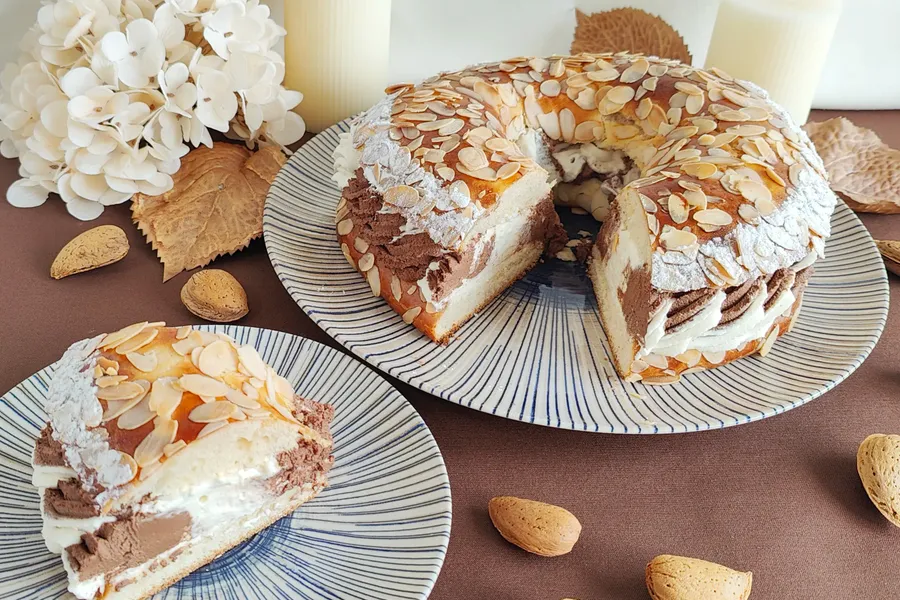
The history of Almudena's crown
The Corona de la Almudena or “Almudena's Crown” is a traditional sweet from Madrid created in honour of the Virgin of Almudena, the patron saint of the city. Unlike historical pastries such as the roscón, this crown has a fairly modern origin: it was conceived in 1978 by the Guild of Pastry Chefs of Madrid specifically to pay tribute to their patron.
The motivation for its creation came from the need to give the celebration on 9 November, the feast day of the Almudena, its own distinctive sweet. According to the Association of Artisan Pastry of Madrid (ASEMPAS), a fermented pastry was devised, made with high-quality ingredients, that would stand out from the traditional roscón and other seasonal doughs.
As for its shape, the pastry chefs took direct inspiration from the crown worn by the image of the Virgin in the Almudena Cathedral. This symbolism is reflected in the decorative peaks of the piece, which evoke the royal jewel.
The pastry competition that gave rise to the crown awarded victory to a recipe combining a brioche-style or fermented dough, flavoured with liqueur—some pastry chefs use Chinchón anise—and filled with highly versatile options such as whipped cream, crème pâtissière or chocolate truffle.
Since its creation, the Corona de la Almudena has evolved. In historic Madrid patisseries such as Mallorca or El Riojano, it is still made with butter, citrus zest and orange-blossom water or liqueur, while many modern versions incorporate innovative fillings such as pistachio cream or chocolate truffle to suit more contemporary tastes.
Finally, its consolidation as a symbol of Madrid’s pastry tradition has been remarkable: every 9 November, patisseries across the city sell thousands of these crowns, and the celebration has even reached charitable events (such as the distribution of giant crowns) organised by guilds like ACYRE Madrid.

 albertoimizcoz
albertoimizcoz

